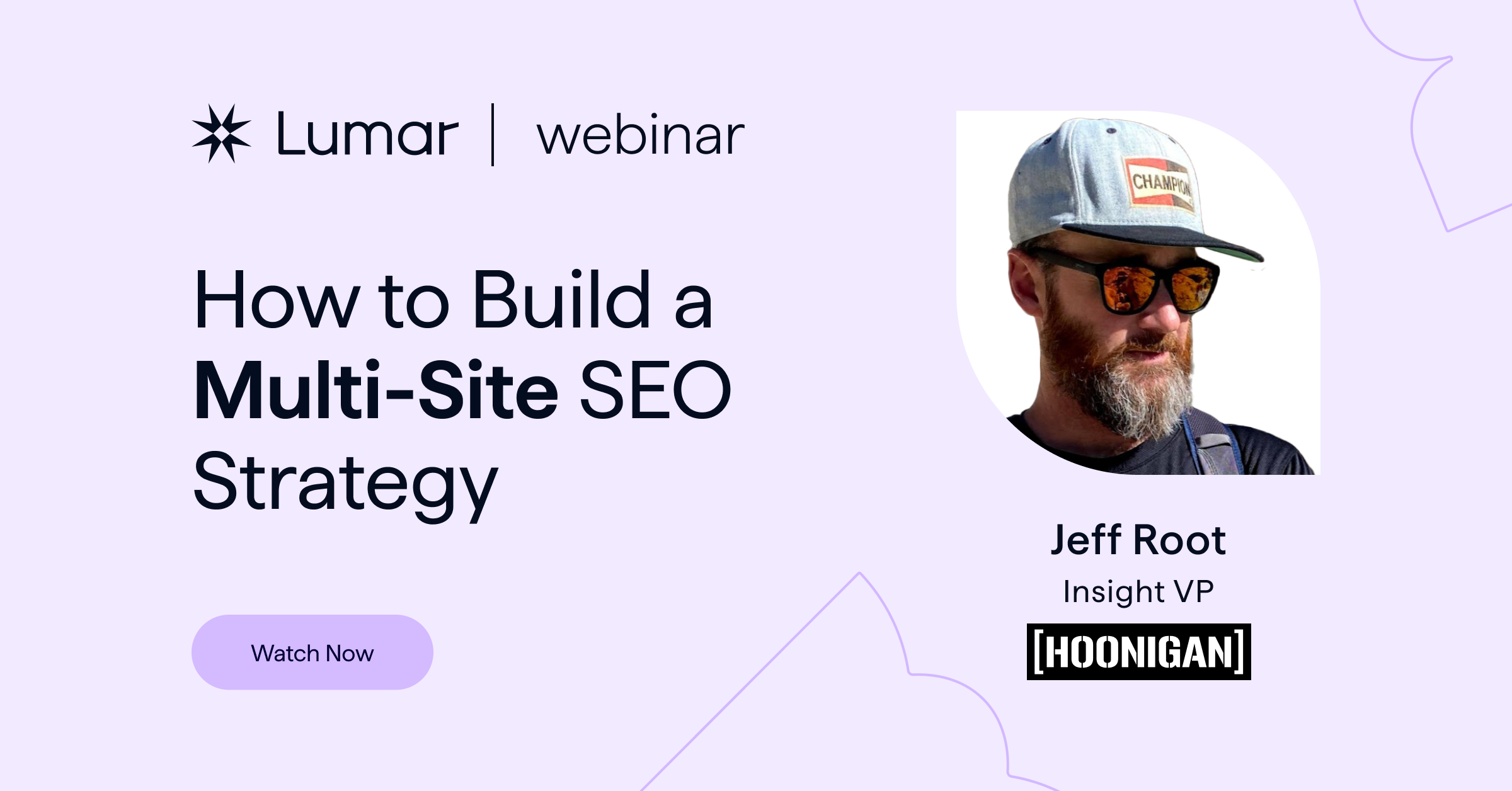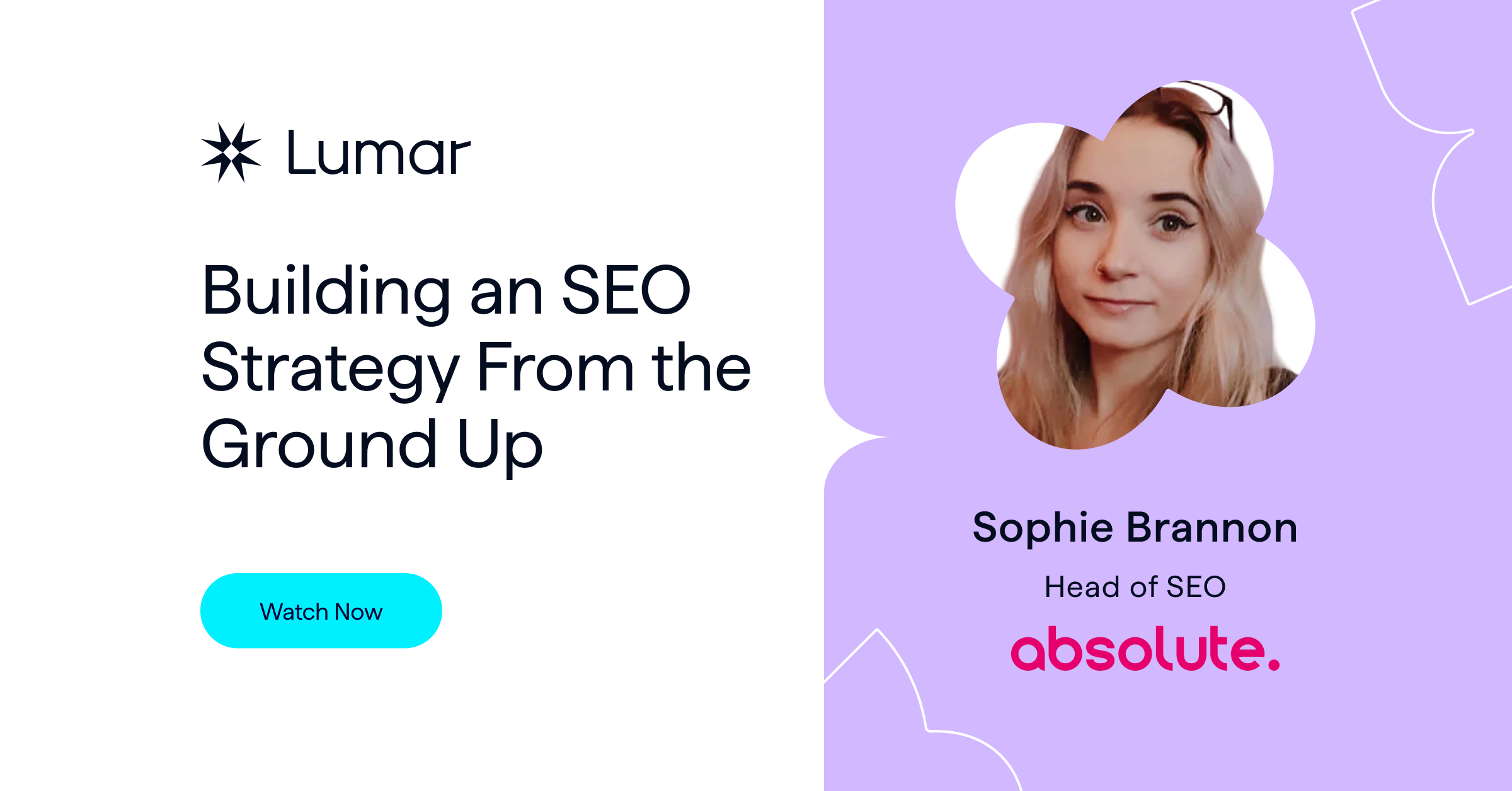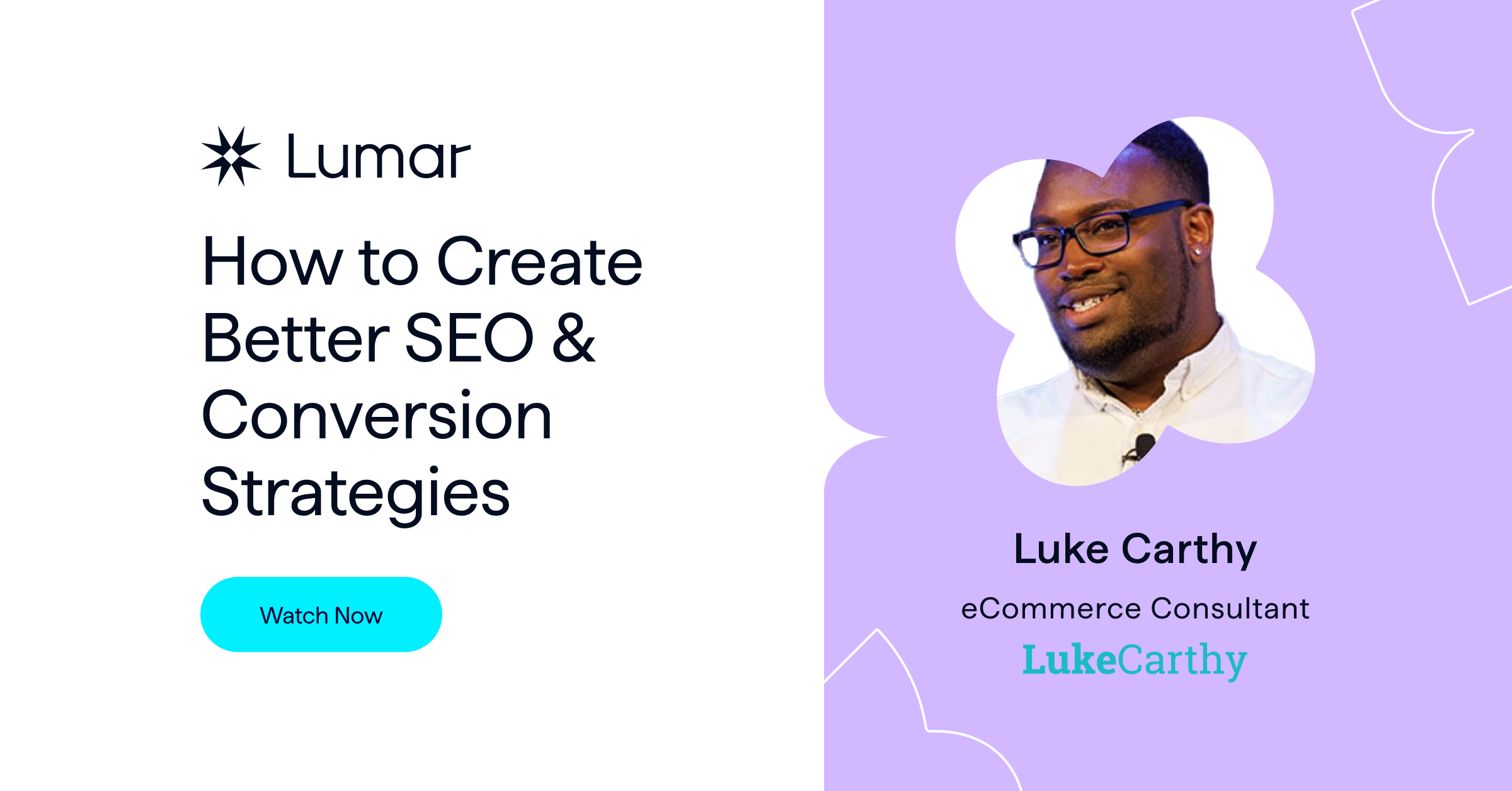On-Demand Webinar:
How to structure your eCommerce website for success
—
The latest in Deepcrawl’s (now Lumar ongoing series of webinars is a deep dive into website structure for eCommerce businesses and an exploration of the impact your site architecture has on search engine visibility.
Daniel Cartland is the head of SEO and Strategy at NOVOS, an SEO agency focused on online retailers. In this presentation, he draws on his years of experience getting retail sites of all stripes ranking in the SERPs. Daniel explores evergreen best practices for eCommerce SEO, as well as how digital storefronts can prepare for seasonal changes related to online shopping (such as the upcoming winter holidays), and how to handle product line changes, out of stock products, and new product launches.
Read on for our top takeaways from the webinar, or watch the full session (plus Q&A!) in the video above.
Deepcrawl Webinar Recap & Top Takeaways for eCommerce SEOs:
Optimizing your website structure for eCommerce
Cartland’s first recommendation concerns product categories and sub-categories. It is important that these are targeted at the correct level—not too broad (e.g. “shirts”), but not too specific either (e.g. “red stripy v-neck t-shirts”).
The correct level of category specification on an eCommerce site, said Cartland, will likely differ from retailer to retailer, but the best way to ensure that you’re getting this right is to do your research. What are your customers searching for on Google? What are they typing into the site search? Are the categories and sub-categories targeting these queries?
When it comes to site structure, Cartland often finds that retail SEOs should be doing more to promote their Unique Selling Points (USPs). He suggests that brands create pages to target their USPs and optimize their categories, sub-categories, h1s, and so forth to target their USPs as well.
Ultimately, this will show your authority, expertise, and relevance to both users and search engines.
Another big part of optimizing site structure for Cartland is ensuring that your internal linking is being used to make your site easy for customers and search engines to navigate. He promotes the use of breadcrumbs (particularly on product pages) and warns against including too many links in your global navigation.
That latter point ties into Cartland’s final structural recommendation for getting linking right on an eCommerce site.
The homepage is likely to be the most authoritative page on your site, so it should be used to link to your core categories in order to distribute that authority accordingly across your most important pages. Cartland warns against vague “read more” and “shop here” anchor text, but also highlights the needs of the customer: “You want somebody to land on the homepage and immediately know what you do and what you sell.”
SEO tactics for common eCommerce practices
Cartland points to a couple of SEO processes that need to be considered to keep our sites adaptable.
His first suggestion is to create a URL for the holidays you want to target and keep it live year-round. This could be for things such as Black Friday deals or summer holiday sales. The key here is that you are not creating a new page each year – you want this to be building up SEO authority over time. “This doesn’t mean you can’t target the year on the page,” he says, “Just don’t date the URL.”
SEOs need to start linking to these holiday pages early enough in the year. Cartland suggests not investing too much time in trying to rank these organically if the holiday in question is only a few days away.
Keep the pages live, but don’t link to them internally during out-of-season months. If users are stumbling across these pages out of season, Cartland suggests putting an email capture there so they can be contacted when the time is right, as well as providing links to other relevant parts of the site (perhaps your current sales or promotions) that the customer may not yet have explored.
Cartland also promotes having a strategy in place for dealing with changing product lines. SEOs need to ask themselves: Do we have a process in place for when items go Out Of Stock? What’s the strategy for adding new pages when a new product is launched?
Again, a lot here depends on what your customers are searching for. When products go out of stock (OOS), are users still searching for them? If they are, Cartland suggests keeping the out-of-stock product page live and directing users to other relevant pages. If customers are no longer searching for these items, he suggests a redirect to another relevant page.
Retargeting comes into play here too. For instance, if an item is only temporarily OOS but will be back online soon, it’s a good idea to include an email capture on the product page to give users the chance to opt-in to hearing about its return.
When it comes to product launches, Cartland suggests that SEO needs to be part of this process from the outset. How are people searching for it? Is there a category or sub-category on the site it already fits into, or is it worth creating a new one?
Create supporting retail content for both humans and search engines
Cartland touches on this when talking about the importance of promoting USPs in your content and categories, but supporting content can also have a wider function.
He suggests that SEOs and website managers create content to target every stage of the customer journey. We want to be reaching customers early in the funnel, building expertise related to our USPs, our products, our core categories, and—crucially—the things customers are looking for when researching your industry or typing their queries directly into site search.
But we also cannot neglect post-purchase content. What are customers searching for after they’ve received your product? Do they have questions about how to use it? Do they have any problems or issues? Not only can this content potentially help users, but it also builds that authority around your products in the eyes of search engines too.
There is a balance to be struck here between creating content that is useful for humans, but that also will be crawled by the search engines.
It is worth researching how Google presents content about your products and related queries in the SERPs. Does it appear to favor long-form articles or shorter listicles? Is it showing videos or a short section of a specific video? But, ultimately, Cartland really hammers home the need for SEO strategy to be led by the needs of the consumer.
- Does this supporting content account for the many different channels and touchpoints your customers are using?
- Is it relevant and the right format of content for your products and/or your target audience?
“The customer-centric viewpoint should underpin everything,” Cartland says.
It’s a longer-term strategy, but if you’re successful at implementing a customer-centric approach more broadly, chances are you’ll ultimately be rewarded by users and search engines alike.



